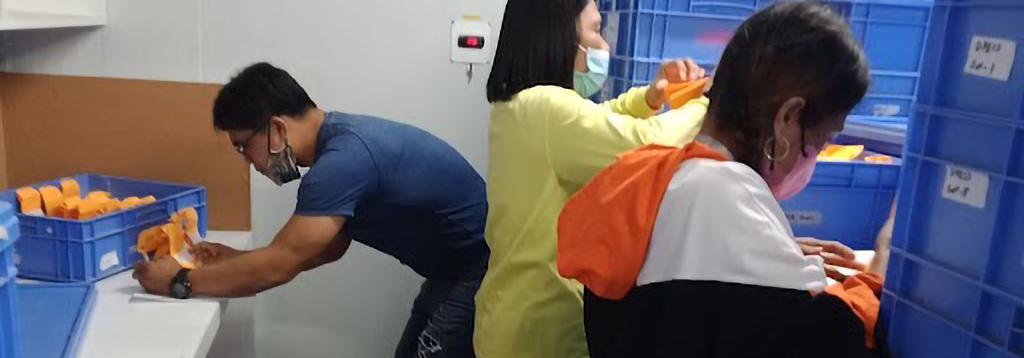IRRI’s new NARVI initiative engages the private sector to accelerate global impact of improved rice varieties
- From
-
Published on
12.07.22
- Impact Area

The International Rice Research Institute (IRRI) is leading a new initiative called Network for Accelerated Rice Varieties for Impact, or NARVI, that will engage in Public-Private Partnerships (PPP) with local, regional, and international private sector companies around the world to expand and hasten the development, dissemination, and promotion of high-quality and improved rice varieties to smallholder farmers.
Initiated by IRRI and launched in 2020-2021, NARVI is a new membership-based network specifically for the private sector, modelled upon previous public-sector sharing and evaluation networks such as the International Network for Genetic Evaluation of Rice (INGER) and ASEAN RIceNet . Private companies and organizations that join the NARVI network will gain advance but non-exclusive access to a pipeline of pre-commercial new elite rice advanced lines developed and owned by IRRI. Each year, NARVI members will receive up to three (3) trial kits comprised of 20 elite inbred lines with the traits of their choosing, such as increased yield, resistance to disease, tolerance to abiotic stress, etc. (subject to availability). They can use these kits for NARVI-shared field trials, evaluation, research, and their own breeding programs, with the goal of fast-tracking the development and licensing of high-value commercial rice varieties suitable for their own markets.
NARVI will provide access to a pipeline of new elite rice advanced lines (Plant Genetic Resource for Agriculture – Under Development, (PGRFA-UD, FAO, http://www.fao.org/plant-treaty/en ) developed and owned by IRRI in a non-exclusive manner, for evaluation by the private partners in the field, conduct research, and select lines to release as commercial varieties. IRRI promotes responsible technology transfer in accordance with its Intellectual Property and Commercialization Policy (IP&C Policy) and with the CGIAR Principles on the Management of Intellectual Assets …
Related news
-

Australia partners with International Livestock Research Institute to upskill researchers from Africa and Asia
International Livestock Research Institute (ILRI)13.11.25-
Food security
-
Poverty reduction, livelihoods & jobs
Australia has joined forces with the International Livestock Research Institute (ILRI) to support th…
Read more -
-

Next-gen rice lines top check varieties at 7.5 t/ha in ESA
International Rice Research Institute (IRRI)11.11.25-
Food security
MOROGORO, Tanzania (8 October 2025) — Elite rice lines are outperforming the current popular varie…
Read more -
-

QTL Profiling Now Live on EBS
International Rice Research Institute (IRRI)11.11.25-
Food security
QTL profiling is now integrated into the EBS Platform’s MDA module. Teams across CGIAR research…
Read more -
